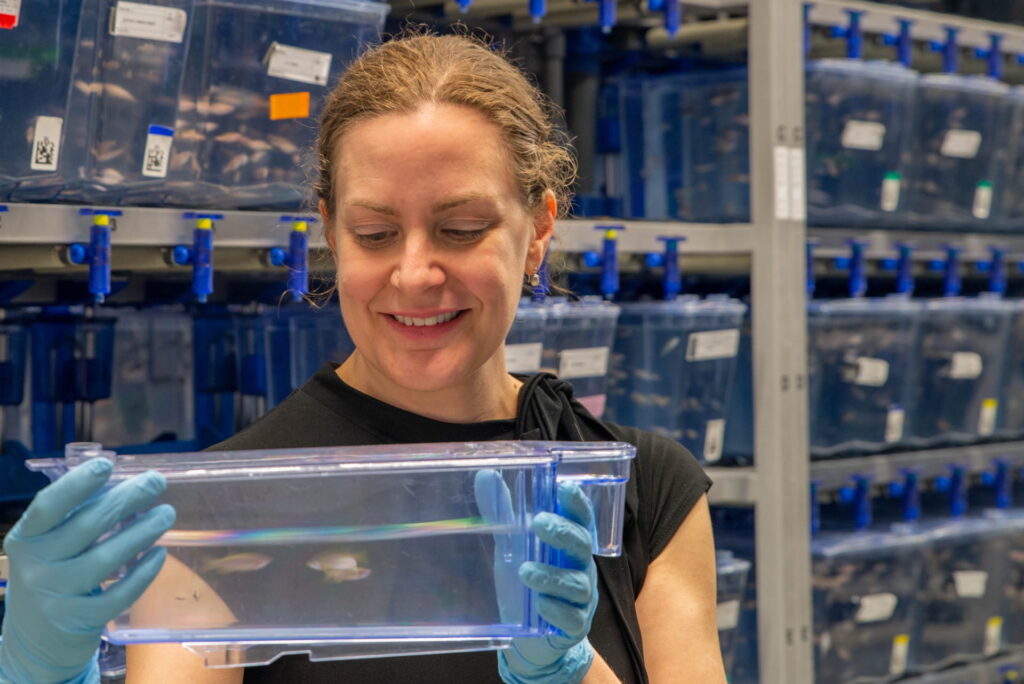Hair cells are the exquisitely sensitive and inexhaustible sensory receptors of the auditory and vestibular systems. They function by transducing mechanical stimuli, such as sound, into nerve impulses that transmit sensory information to the brain. Features of hair cells that make them incredibly effective detectors of sound also make them vulnerable to damage from noise or ototoxic drugs. This damage can lead to hair-cell death or permanent loss of connections between hair cells and auditory nerves.
Research in the lab of Lavinia Sheets, PhD, focuses on defining the specific pathological changes that occur in hair cells overexposed to noise or ototoxic drugs, and uncovering the cellular processes that drive repair following damage. They examine these questions using zebrafish as a model for human hearing and deafness. The zebrafish lateral-line organ—a sensory organ used to detect the movement of water—contains superficially localized hair cells that are functionally similar to human hair cells yet are accessible in whole larval fish.
The Sheets lab can thereby use genetics and pharmacological interventions to manipulate cellular pathways in lateral-line hair cells and examine progressive hair-cell damage in a live, intact organism. In addition, they take advantage of the zebrafish’s ability to regenerate complex tissues following damage, including hair-cells and their innervating nerves, to identify novel strategies for repairing damaged hair cells.
Currently, there are three major areas of ongoing research in the Sheets lab:
1. Understanding pathologies of acoustic trauma: In a project funded by a Research Project Grant from the National Institutes of Health (NIH), the Sheets lab has developed a technique using calibrated overstimulation to produce noise-damage in zebrafish lateral line. Noise-exposed lateral line shows morphological and functional changes that correspond to changes observed in noise-exposed mammalian ears. Yet lateral-line hair cells and nerve connections begin to repair within two hours after intense noise exposures, and show full morphological and functional recovery within days. Understanding how zebrafish hair cells are damaged then repaired following noise exposures may ultimately reveal potential therapeutics for treating sensorineural hearing loss.
2. Identifying novel regulators of afferent nerve regeneration and hair-cell reinnervation: Another project, funded by an International Grant from Action On Hearing Loss, is striving to identify therapies to promote cochlear nerve regeneration and hair cell reinnervation by performing a large-scale drug screen for modulators of lateral-line organ regeneration.
3. Identifying methods to protect from cisplatin-induced damage: In collaboration with Dr. Mark Warchol, a third project is using the zebrafish model to identify novel protectants against cisplatin-induced neurotoxicity with the goal of protecting auditory nerve fibers from damage during cisplatin-based chemotherapy. This project is funded by The Children’s Discovery Institute, St. Louis Children’s Hospital.
